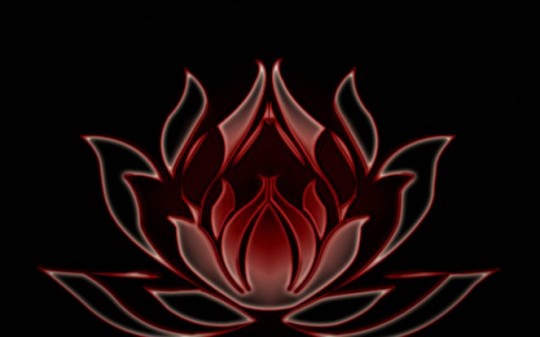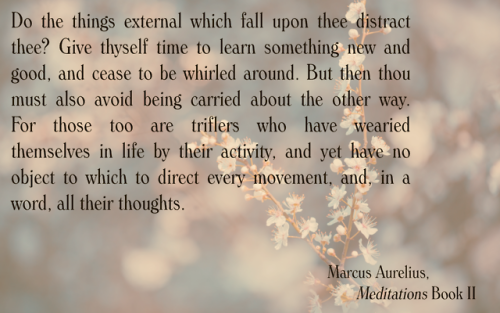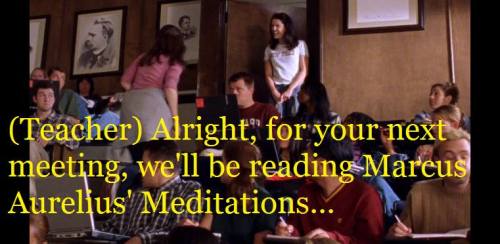#meditations
In this video, I guide you through some affirmations that will help you attract your soulmate/specific person.
It is my personal belief that using a set of affirmations for at least 15 days helps integrate them into your subconscious mind.
Once the subconscious mind believes in something, typically our outward actions and world change around us - which is why I recommend that you listen to these affirmations every day for 15 days, this gives you enough time for them to become a part of your subconscious mind.
My tips for making this meditation even more powerful:
1. Place both hands on your chest above your heart
2. Say the affirmations out loud
3. Make sure you get your emotions involved I hope these affirmations help you attract the love you truly deserve :) #affirmations#meditation#love
— Marcus Aurelius, Meditations
“hatırlayan da geçici, hatırlanan da.”—
marcus aurelius - meditations
What is a Labyrinth?
The labyrinth has long been considered a place of magic and introspection. Labyrinthine designs have been found in nearly every major religion, and are an integral part of many ancient cultures. Labyrinths have been found all over the world. They are, in essence, a magical geometric shape which helps define sacred space. A labyrinth is not the same as a maze – there is only one path in, and one path out.
During the period of the Crusades, wealthy families often built a labyrinth as a way to represent the pilgrimage to the Holy Land. Today, they can be built and used by anyone as a tool of reflection and prayer. You can make a labyrinth out of just about anything – planted flowers, shrubs, or stones for a permanent structure, string or sand or cornmeal for a more temporary one.
When walking through a labyrinth, your body tends to turn back and forth - first you’re moving right, next you’re going to the left, with a 180 degree turn each time. This causes you to shift your awareness from the right side of the brain to the left, and then back again. It is believed that this is one of the reasons why a labyrinth walk can induce varied states of consciousness.
The Labyrinth as Problem-Solving Tool
To do this meditation, if you don’t have access to a labyrinth, you’ll need to construct a simple one of your own. Use the pattern above as a guideline if you wish, but if you’re working in a smaller physical space, feel free to make your design more simple than that. You can mark out your labyrinth with tape, string, or paint on the ground. If you’re doing it outside, I like to use a trail of birdseed – it doesn’t damage the grass, and the local wildlife cleans up for you afterwards.
Once you’ve marked out your path, take a moment to meditate on what sort of issues you would like to resolve in your life. Ostara is a time of balance, so one of the great uses for this meditation is that of finding polarity and solving problems. Consider for a moment what problems – either physical, spiritual, external, or emotional – you would like to find a resolution for at this time. As you walk towards the center, you will begin working out solutions for your problem.
Take your first step into the labyrinth, walking slowly. Stop after each step, and think. Become aware of your surroundings, and what lies before you, and what lies behind you. Begin by thinking about not only your problem, but what you think of it on an intellectual level. Explore how the problem has come to exist, from a non-emotional standpoint.
As you continue to walk, move on to how the problem makes you feel. What emotions does it bring about in you? Do you find yourself unable to make rational decisions when you’re dealing with your problem? What is it about this problem that brings about such an emotional response within you, and WHY does it effect you so much?
As you begin the third part of the journey, move on to how your problem effects you in your physical world. Are you running out of money because of a bad job? Do you have someone in your life who is hurting you? Have you become ill because of your problem?
Continue walking slowly, and examine how the problem has effected your spiritual needs. Do you feel as though you are at a loss in your spiritual path? Does it inhibit your growth as a spiritual person?
As you approach the center of the labyrinth, it is time to begin looking for solutions. If you have a patron deity, you can ask them to take the problem into their hands. You can ask the universe to help with a solution. You can ask for a vision to guide you – whatever choice works best with you and your faith. As you reach the center, ideas will begin to come to you that will help resolve your issue at hand. When these visions arrive, accept them without questioning or judgment – even if they don’t make sense right now, you can analyze them later on. Meanwhile, accept that a solution has been given to you by a higher power.
Stand in the center of the labyrinth. Ask yourself, “What is the first step? How may I make this solution come to be?” Take some time to just stand – or sit – there, and let your solution sink in. You have completed the first part of your journey – the reaching of a resolution. When you are ready, start making your way back out of the labyrinth.
The Return Path
As you take your first few steps from the center, consider the solution you were given. Look at it in a non-judgmental way, and think of it logically. Is it something you can make happen? Even if it seems difficult or hard to achieve, if you set yourself a goal, it IS obtainable.
Continue walking towards the exit, and keep thinking about the answer to your problem. Consider the deities or other higher power which provided you with this answer. Do you believe they have your best interest in mind? Of course they do – so be sure to thank them for taking the time to pay attention to you and your needs, and for helping you reach this state of awareness.
As you continue to walk, consider once more your spiritual life. Will this solution allow you to grow or learn spiritually? Will you feel more whole spiritually after the solution has been implemented? What about physically? Will your body and health be affected in a positive way once you begin working towards this resolution? How does the solution make you feel on an emotional level, and how will it effect the negative emotions you felt about your problem in the first place?
As you approach the end of your journey, try to look at your solution from a logical, non-emotional perspective. If you work towards this solution, will it resolve your problem? While it may create more work for you, and be difficult to obtain, will the end result ultimately be worth the effort of making it happen?
Once you step out of your labyrinth’s path, take a moment to once again thank the deities or higher power that assisted you. Think, as well, about how you feel as you emerge from the labyrinth. Do you feel lighter, as though you have truly found a way to resolve your issue? Take a deep breath, recognize the new power that you have, and get to work on making the necessary changes in your life!
“Think of yourself as dead. You have lived your life. Now, take what’s left and live it properly. What doesn’t transmit light creates its own darkness.”
Post link

Guide to Meditation
Many times, it is said that one must meditate by emptying their mind of thoughts, but this is only one method of meditation. In truth, meditation is much more complex than many may think, as there are many uses of it, but it is at the same time one of the easiest ways to improve your spiritual discipline. There are two primary ways of meditating: the silencing of thoughts, and the meditation where you focus on something (a spiritual teaching, a method of healing yourself, a sigil, etc). Personally, I have found the meditations of focusing on things to be much more rewarding than the silencing of thoughts, but you can do either or use both whenever you wish.
How to meditate: For any meditation, you need to begin by sitting somewhere comfortable (it can be in complete darkness, or during the daytime if you want; either way, you need to be alone). You can lay down to meditate if you need to, but it is best to do this while sitting up-right since your focus and flow of breath is better in this position. As you sit relaxed, you close your eyes and breathe deeply and slowly, relaxing your thoughts and bringing yourself into the present. As you breathe in, hold your breath for a couple seconds and then release it slowly, continue this for a few repetitions as you relax your mind.
Once you do that, you either stop your thoughts or you begin focusing on whatever you need to focus on (like a spiritual teaching). The only meditations where you don’t close your eyes are when you want to stare directly into a sigil, yantra, or talisman in order to gain its benefits (you cannot use sigils or talismans without meditating on them, simply placing them somewhere doesn’t have any affects since your mind must connect with it). Additionally, meditation cannot be done by simply sitting relaxed and thinking of positive things, since this is simply relaxing and doesn’t go deeper than that.
If you find difficulty focusing or staying still during the process, you need to continue doing meditations and repeatedly discipline the mind and body to do as you wish. This can be painful, but it will gradually work if you remain determined with it, and the process will become easier. Also remember that during meditations where you must focus on something, you need to stay focused on it as much as possible; if you notice your thoughts drifting, make sure to immediately bring them back to your focus.
As you meditate, the process should gradually lull you into a deeply relaxed state. And so by the time you finish, your mind should feel rejuvenated. The effects of meditation become stronger the more often you meditate, so it may not seem to be doing much at first, so you must remain patient and continue until you gradually become more attuned to the impacts it has. For more experienced meditators, a meditation should normally last from 30 minutes to an hour, or longer if desired. If you are at this stage, deep meditation should begin to feel as if you are entering a trance-like state where your mind enters a different frequency which is lower and less active; this low frequency allows for better access to one’s astral senses if they’ve been developed enough. If you are a beginner to meditation, you should meditate for at least 10 minutes, but ideally for 20 minutes or longer. Overall, if you are a spiritual person, especially one who is focused on gaining Awakening throughout the years, you should meditate at least twice a week.
Things that can help meditation:
- Mala beads
- Incense
- Tibetan singing bowls
- Low-frequency ambience (not too much noise; a good example is Cryo Chamber)
- Some people may meditate better in a dark room than a bright room
- Best times for meditation tend to be either in the early morning or late night (calmer times of the day)
Meditation Examples:
Core meditation – This is the meditation to achieve core awakening, where you gain permanent access to your higher self and obtain easier communication with them. You must focus gently on the centre of your abdomen, right beneath your ribcage, and imagine a golden orb of light here. This needs to be done for 20 minutes, and to be performed every single day for at least one year (or else the progress is lost and it needs to start over). Ideally, this meditation should be done once you know of your higher self’s identity and name.
Meditation on the colour magenta – This colour has a specific frequency that helps you to gain access to your astral senses; this process happens very gradually and needs many repetitions, as well as your own training to gain these skills. You only need to stare into this colour (even an image from your phone) for at least 10 minutes, and to do this often. While you meditate on the colour, make sure you keep in mind your intention to gain astral abilities.
Meditation on a sigil, talisman, or yantra – Staring into a working sigil, talisman or yantra (these all need to be created in specific ways, not just designs). The meditation should last for at least 10 minutes.
Meditation while chanting a mantra or enn – This can also be done while staring into a yantra or sigil.
Meditation on a spiritual teaching – Any spiritual teaching you receive that you wish to ponder deeply upon.
Meditation without thought – Stopping the flow of thoughts so you can become mentally still; this is a meditation best for those who follow the Right Hand Path, seeking to remove their sense of self.
Meditation on the breathing-in of fire element – If you want to gain some closeness to the element of fire and gradually use it to help you become more empowered and aware of the strength you have, this is a good meditation to use (especially if you are following Demonic teachings). To perform this, begin the meditation process as usual and then project yourself into a vision- a temple with a blazing fire at the altar. Stand before the fire and focus on breathing it in deeply, hold it within yourself for a couple seconds, and then release it. Continue doing this as long as you need.
Meditation of the releasing of inner-burdens – This is a good meditation to help you become relieved from built-up stress. Begin the meditation as usual and then visualize yourself in the depths of space when ready, with only darkness and stars in the distance. As you breathe in, visualize your inner-burdens gathering up together inside you, then hold it, and breathe out slowly as you exhale the burden into space. Continue this as long as you need.
Meditation of oneness with Nature – This is for sitting outside in a tranquil area with trees and plants. Sit comfortably in the grass and begin the meditation as normal. As your mind relaxes, vividly imagine that you are a tree and have spent all your life in this spot, communicating through senses with the other plants. Imagine you have roots going deep into the ground, and pay attention to what you sense from nature’s energy.
Meditation to rise above despair – When you are feeling strong emotions of despair, and these are threatening to take hold of you and cause you to weep, you can use this meditation if you use your will-power. As you are experiencing this pains and mental darkness, visualize yourself in the labyrinth of your mind and begin projecting bright flames into all the corridors, destroying the lies of your Shadow so you can begin seeing the truth of what is happening. Tell yourself that you know it’s just a lie repeatedly, and then project yourself quickly upwards as if you have giant wings, so you expand beyond the labyrinth, high above it. Imagine yourself as a burning black flame here, and hold your focus to bring yourself into a more controlled state of mind. Focus on filling your mind with either a tranquil darkness or a blazing light, whichever best suits you.
Meditation of fire-staring – This is a traditional meditation method in Tantric practices. You simply need to light a candle in a dark room and sit before it. Stare directly into the flame without blinking for as long as you can.
Meditation of the Wasteland – This is a meditation for more serious practitioners who wish to challenge themselves; though refrain from this if you are prone to depression. For this, begin the meditation as usual and then vividly visualize yourself in a bleak wasteland, with only grey craggy rocks and a dark cloudy sky above. There are no plants or other signs of life, only you and silence. You must walk through this wasteland and come to terms with what has been lost in the past, and what must be lost in order to grow (negative habits, toxic people, arrogance, envy, materialism, etc). As you wander the wasteland, pull these negative attachments out from yourself, as if they are a black vapour, and throw them into the distance where they dissipate. Exit this meditation whenever you feel ready.
Magick is a complex thing, involving many different parameters and unless you know how to apply them properly, the results are not going to be any different to make-believe, or at best, placebo. Let’s review some simple things one can do in order to get better results.
1. PHYSICAL
It is perhaps self-evident that you need to have some space in order to do that. By space I don’t mean that a fully-equipped ritual room is necessary; you can do magick even without an altar in a closet, but what you *must* have is “room for yourself”, a place to be undisturbed. You may lack your own room or house, you may be renting or staying at friends’ or at a university dorm – this is not a problem if you can manage some time for yourself. Sit alone, and be aware of yourself; your thoughts, your mental patterns, your emotions as you slowly breathe, and try to relax. Progressively relax your body (either start from the head downwards, bit by bit, or start from the feet upwards – different ways for relaxation, but they work). Allow time to do this; at least twenty to thirty minutes (unless you are very experienced and can relax at will within a few minutes). Observe what is going on, without doing anything; try to allow the torrent of thoughts to flow through you, without holding on to something specifically. Do the same for your emotions; worries, fears, stress, simply let it flow and vanish, without examining anything, as you breathe deeply and you relax your body. Realize that you are more than your thoughts, more than your emotions, more than your body. Your systems may have been disturbed by the rush of everyday life, but now you are at peace. You enter a deeper state of mind as you physically relax your body, and this is good. It’s the doorstep to all the good things with regards to improving your life, because through this, you have achieved in lowering your brain wave activity, and this makes your brain more open to positive suggestions. Remember, do not stress in trying to achieve it; simply allow it to happen, as you keep breathing and close your eyes. You don’t have to “see” anything at this stage. Physical control of this simple relaxation is very important – you’ll thank yourself years later. If you feel okay with it, try to do some positive affirmations about yourself, like: “I am getting better and better at this / every time I enter this level, my negative thoughts and emotions will dissolve, I will be in control and my mood will improve” (feel free to write your own positive suggestions). If you are able to practice this technique at least once daily (allow for about 20 minutes), after a couple of months you will have noticeable results in yourself and a level of clarity that might surprise you.
Taking care of your body’s needs is also very important, and is often overlooked. Disturbed sleep patterns, exhaustion, taking substances or getting drunk often, neglecting physical training or being idle every day for many hours will do more damage than you think. Whether you love your body or you view it as a machine or as a burden, it’s something that has value, without which you cannot perform many of the tasks that constitute a physical life, and may even affect your grounding. If you have had bad habits for many years, you will know how detrimental they can be. Self-care is important, and not only when life takes a toll on you. You won’t be able to manage traumas, or even simple stressful situations if you don’t learn to care for yourself and neglect the most basic needs.
2. EMOTIONAL
Your emotions can fuel your magick, or they can make it dissipate into random energies – the difference is control. Learn to master your emotions when you wish to do magick. You set up the area (or yourself) to begin? Then it’s not time for doubts, feelings of insecurity/inferiority and other self-defeating things. Prime yourself with the idea that since you need this to work, you will succeed. Isolate the negative thoughts, and focus on the emotions that are essential for your magick to work. Why do you want to do this magickal work? What do you hope to achieve? Magick works on Need, and Need is fueled by emotions, the right kind of emotions. Believe in yourself when you do this, because if you doubt each step of the way, the emotional power will be weak and it will impact on your spells. Some people believe that you can do spells without the involvement of emotions. Some have even been affected by the Jedi teachings from movies, or even misreading some Zen/Buddhist texts – emotions are NOT your enemy! You can be passionate about the right sort, and invest them in your magick. Even in Taoist principles, there’s a Balance – this doesn’t mean neutralizing the emotions! Fill yourself with the certitude of your Need, and when crafting your spell, fuel it with your emotions in a passionate way. Do it all the way, and it will be much stronger.
3. MENTAL
Focus through controlled visualization; start small. Take an object, a geometrical thing like a cube, and visualize it, with eyes closed. Watch it in your mind’s eye, and see it spinning. Now try to hold it still. You will find this very difficult at first, because the image might “jump around”; relax your body and your mind, and keep trying. Eventually you will be able to keep it still for a few moments – then you can do it for longer. You will even be able to make it turn in any direction you want, slow or fast. The purpose of this is to be able to control the visualized object, because this trains your focus. Now try with another object; eventually, try with symbols of your choosing. Later, use landscapes or something that matters to you, perhaps a deity or a statue or an altar. When you are confident about this practice, your mind will become much sharper in its focus, and spellwork will be easier.
If you find your attention challenged through ADHD or other issues, it may be hard for you to remain focused for a prolonged time. So add a filter of background music like ambient (I personally use dark ambient a lot, but selective tracks), or something else that allows your mind’s excess energy to be diverted and also being able to do this without too much distraction.
The use of Language in spells is another way that opens up great possibilities for your magickal practice. There are several arguments online and in books, each supporting their own perspective; the traditionalist says, use spells in archaic, latin, or other ancient language. The modernist says, use them in your native tongue, but perhaps weave them in verses, like in a poem (you can see some pagan and Wiccan stuff like this). Others promote the use of “barbarous words” that may not make much sense, but impress the mind and thus, with the right intention, unlock its power. I will tell you the basic principle here and you decide for yourselves. Whatever you use, it should be *different* than what you would use in your mundane life. Because the mind needs to notice the difference, that when you do your spells, it should switch to another modality – to be aware of it. Simply because these words/intonation/language is not common, it implies purpose. It tells the brain you are speaking Purposefully and your Willpower is behind these words. If you do that each time you Speak magickally, your practice will greatly benefit from it.
4. PROCEDURAL
Routines build discipline; this is a golden rule, and you should remember it. No matter what you may read from various places, there’s no substitute for a magickally disciplined mind. You may believe that it’s an exaggeration, and that you can do magick just fine. Sure you can do it, but what if you could do the same thing *better*? Or what if your potential is greater than what you think it is? Could it be possible to maximize your results? You’ll never know if you don’t train yourself and simply resort to a “lazy”, more laidback approach. Set up your own routines; do certain things each day, or each week. Set up some days in the year that are special for your practice (one example is the pagan holidays, or the Moons, and so on). Have regular times when you meditate, or when you cleanse yourself. It works just like training muscles or doing a fitness program: your spiritual self is strengthened and you acquire discipline, which fuels your willpower – an indispensable tool for all types of magick.
“waste no more time talking about great souls and how they should be. become one yourself mother fucker.” - Marcus Aurelius
Post link
“In the morning, when you rise unwillingly, let this thought be present: I am rising to the work of a human being.Why then am I dissatisfied if I am going to do the things from which I exist and for which I was brought into the world? Or have I been made for this, to lie under the blankets and keep myself warm? But this is more pleasant. Do you exist then to take your pleasure, and not at all for action or exertion? Do you not see the little plants, the little birds, the ants, the spiders, the bees working together to put in order their separate parts of the universe? And are you unwilling to do the work of a human being, and do you not make haste to do that which is according to your nature? But it is necessary to take rest also. It is necessary: nature, however, has fixed bounds to this, too: she has fixed bounds both to eating and drinking, and yet you go beyond these bounds, beyond what is sufficient; yet in your acts it is not so, but you stop short of what you can do. So you do not love yourself, for if you did, you would, love your nature and her will. But those who love their several arts exhaust themselves in working at them unwashed and without food; but you value your own nature less than the engraver values the engraving art, or the dancer the dancing art, or the lover of money values his money, or the vainglorious man his little glory. And such men, when they have an ardent passion for a thing, choose neither to eat nor to sleep rather than to perfect the things that they care for. But are the acts that concern society more vile in your eyes and less worthy of your labor?”
- Marcus Aurelius. Meditations.
Art: Edward Hopper. Summer Interior, 1909.
Post link
NOTES TO SELF
I love to find positive inspiration online, in books and in podcasts. I also like to take notes. This has resulted in these little positive reminders that I try to follow every day as my self care practice and that help me stay positive. When I start to feel down, I usually haven’t been paying enough attention to them. I’m sharing them here because I find them so helpful and maybe some of you will find them useful as well.
Post link
Gilmore Girls reference #745 and #746
Season 2 Episode 4: The Road Trip to Harvard
Marcus Aurelius was a Roman emperor and a philosopher. Meditations is a collection of his personal writings. He wrote the 12 books of “Meditations” and possibly had no plans to publish them since they had no names. They were published after his death and given the name “Meditations”
Post link
Motorcycle Meditations
In January 2019, UCLA published a study (in partnership with Harley-Davidson) cataloging the numerous health benefits of riding a motorcycle.

Research Highlights:
● Riding a motorcycle decreases stress by 28%
● Similar to light exercise, a 20-minute ride increases heart rates by 11% and adrenaline levels by 27%
● Compared to driving a car, focus enhances while riding a motorcycle (at levels comparable to meditating)
● Increased alertness in participants’ brain activity while riding
As motorcyclists, we’re already aware of the advantages of opting for two wheels. We throw around phrases like throttle therapy. We stand by the claim that “four wheels move the body — but two wheels move the soul”. We swear that “you never see a motorcycle parked outside of a psychiatrist’s office.”
But my question is:
Why?
Why does motorcycling decrease stress?
Why do two wheels increase your focus?
In this day and age, it’s hard to do one thing at a time. We’re often watching Netflix while scrolling through Instagram, reading an email during a meeting, or worse yet, texting while driving. But on a motorcycle, if you’re not focused on doing this one thing, it can cost you everything.
When I’m on the bike, I don’t worry about my bills or stress over workplace drama. I don’t ruminate over the past or get anxious about the future. I don’t let anything distract me from the now.
I’m focused. I’m aware. I’m present.

Psychologists refer to this state of mind as flow.Flow is when all your energy goes into one activity and everything else falls away. It’s that sensation when you become fully immersed in what you’re doing. If you’re a painter, it’s when you paint. If you’re a writer, it’s when you write. If you’re a motorcyclist, it’s when you ride. It’s those rare moments in life when your thoughts and your actions are one, and that’s the best part of motorcycling — losing yourself in it.
In the saddle, I tend to lose track of time. For that reason, I refuse to set the clock on my bike’s instrument cluster. As I see it, I don’t want an excuse to take my mind off the road. I don’t want to feel rushed because that’s when mistakes occur. Yes, I could be late to work — and I have been — but it’s better than being injured or dead. After all, worrying about time (or anything else) would take me out of the nowand we could all use more now in our lives.
Today, we’re often in two places at one time. We sit at a dinner table with our significant other and scroll through our feeds—separately. Our bodies are physically present, but our minds are elsewhere. It seems that we’re always wanting something other than what is currently in front of us.

German Philosopher, Arthur Schopenhauer, believed that people go through life with an endless striving for more (I want a new car. I want a promotion. I want a better-looking spouse. etc.). Pessimistic as that sounds, he also felt that humans could find “freedom from suffering” during the moments when they’re captivated by beauty.
If you’ve ever looked out over a great landscape (Yosemite Valley, Grand Canyon, etc.), you know the feeling. If you’ve ever thoroughly enjoyed a piece of music, you know the feeling. If you’ve ever found yourself completely immersed in a movie, you know the feeling. Well, for me, I find that feeling in motorcycling.
The dangers of motorcycling indeed deter most people from taking up the sport and I understand that outlook. For instance, mountain climbing seems like a dangerous activity to me. You’re suspended thousands of feet above the ground with your life dangling from ropes and carabiners. However, for climbers, the rewards outweigh the risks.
By concentrating on finding the next foothold or transferring weight appropriately, mountain climbers immerse themselves in the experience. In those moments, the prospects of death recede because they feel most alive. Similar to mountain climbing, injury and death are imminent threats with motorcycling, but it’s that threat of danger that forces riders to focus on the task at hand.

Yes, UCLA and Harley-Davidson have the percentages and figures to link riding and mental health, but they’re concentrating more on the what and I care more about the why. With Millennials valuing mental health, it’s a creative, forward-thinking approach for a company that’s historically conservative.
However, I wish there was more emphasis on the subjective experience as well as the objective data. After all, it’s hard to measure beauty with percentages and figures. In the end, this study aims to coax potential new riders into taking the leap but they need more context than just hearing, “motorcycles make you happier.” Hopefully, my explanation helps illustrate the point that Harley and UCLA are trying to make, and as a result, more people take to two wheels.
Let us be reminded that before there is a final solution, there must be a first solution, a second one, even a third. The move toward a final solution is not a jump. It takes one step, then another then another. Something, perhaps, like this:
1. Construct an internal enemy, as both focus and diversion.
2. Isolate and demonize that enemy by unleashing and protecting the utterance of overt and coded name-calling and verbal abuse. Employ ad hominem attacks as legitimate charges against that enemy.
3. Enlist and create sources and distributors of information who are willing to reinforce the demonizing process because it is profitable, because it grants power, and because it works.
4. Palisade all art forms; monitor, discredit, or expel those that challenge or destabilize processes of demonization and deification.
5. Subvert and malign all representatives of and sympathizers with this constructed enemy.
6. Solicit, from among the enemy, collaborators who agree with this constructed enemy.
7. Pathologize the enemy in scholarly and popular mediums; recycle, for example, scientific racism and the myths of racial superiority in order to naturalize the pathology.
8. Criminalize the enemy. Then prepare, budget for, and rationalize the building of holding arenas for the enemy- especially its male and absolutely its children.
9. Reward mindlessness and apathy with monumentalized entertainments and with little pleasures tiny seductions: a few minutes on television, a few lines in the press; a little pseudo-success; the illusion of power and influence; a little fun, a little style, a little consequence.
10. Maintain, at all costs, silence.
In 1995 racism may wear a new dress, buy a new pair of boots, but neither it nor its succubus twin fascism is new or can make anything new. It can only reproduce the environment that supports its own health: fear, denial, and an atmosphere in which its victims have lost the will to fight.
The forces interested in fascist solutions to national problems are not to be found in one political party or another, or in one or another wing of any single political party. Democrats have no unsullied history of egalitarianism. Nor are liberals free of domination agendas. Republicans have housed abolitionists and white supremacists. Conservatives, moderate, liberal; right, left, hard left, far right; religious, secular, socialist-we must not be blindsided by these Pepsi-Cola, Coca-Cola labels because the genius of fascism is that any political structure can host the virus and virtually any developed country can become a suitable home. Fascism talks ideology, but it is really just marketing-marketing for power.
It is recognizable by its need to purge, by the strategies it uses to purge, and by its terror of truly democratic agendas. It is recognizable by its determination to convert all public services to private entrepreneaurships, all nonprofit organizations to profit-making ones-so that the narrow but protective chasm between governance and business disappears. It changes citizens into taxpayers-so individuals become angry at even the notion of the public good. It changes neighbors into consumers-so the measure of our values as humans is not our humanity or our compassion or our generosity but what we own. It changes parenting into panicking-so that we vote against the interests of our own children; against their health care, theireducation,their safety from weapons. And in effecting these changes it produces the perfect capitalist, one who is willing to kill a human being for a product (a pair of sneakers, a jacket, a car) or kill generations for control of products (oil, drugs, fruit, gold).
When our fears have all been serialized, our creativity censured, our ideas “marketplaced,” our rights sold, our intelligence sloganized, our strength downsized, our privacy auctioned; when the theatricality, the entertainment value, the marketing of life is complete, we will find ourselves living not in a nation but in a consortium of industries, and wholly unintelligible to ourselves except for what we see as through a screen darkly.
Just as physical pain alerts us to troubles in our body, mental pain alerts us to where we need to be more conscious. In other words, our frustrations, anger, delusions, and so on become our greatest helpers in freeing ourselves from suffering. They point to where the “Ego” is trapped, and they remind us to begin to shift our identity to the “Soul” level. They show us where we are resisting change and where we need to grow beyond past conditioning.
~ Ram Dass (from Still Here)
Así como el dolor físico nos alerta sobre problemas en nuestro cuerpo, el dolor mental nos advierte dónde debemos estar más conscientes. En otras palabras, nuestras frustraciones, ira, engaños, etc. se convierten en nuestros mayores ayudantes para liberarnos del sufrimiento. Señalan dónde está atrapado el “Ego” y nos recuerdan que debemos comenzar a cambiar nuestra identidad al nivel del “Alma”. Nos muestran dónde nos resistimos al cambio y dónde debemos crecer más allá del condicionamiento pasado.
I thought the whole COVID-19 quarantine thing would be over in 2 or 3 months, and when I realized in late July that it was going to continue indefinitely, I went through about 6 weeks of pretty bad depression until I started realizing that I needed to pay attention to what I was feeling in a different way. I made an effort to meditate more (which, by the way, is the answer to almost EVERYTHING) and to make my yoga sessions more meditative, and I learned that Ram Dass is right: it is possible to let mental pain show us what is really going on underneath the surface, which in turn allows us to make shifts in thinking and perceptions. This kind of awareness is 75% of the battle, because it’s now much easier to make decisions, take action if necessary, and stay in a more positive mindset. For me personally, I learned that the depression was really about resistance to change and being even more out of control than usual. I didn’t like how different my life had become. I was struggling with and resisting things I couldn’t control, such as not being able to see people I love and not being able to go to very many places. Through mindfulness and meditation, I was able to relax around the resistance and desire to be in control, and they lost their power over me. I have been able to let go a little better and allow things I can’t change or control to be as they are. I still have days of depression, of course, because this all really sucks for all of us, but I’m doing a better job of taking things one day at a time and looking for things to enjoy and appreciate each day. May all of us be able to find joy in the present moment.
Pensé que todo el asunto de la cuarentena de COVID-19 terminaría en 2 o 3 meses, y cuando me di cuenta a fines de julio de que iba a continuar indefinidamente, pasé por aproximadamente 6 semanas de depresión bastante fuerte hasta que comencé a darme cuenta de que necesitaba prestar atención a lo que estaba sintiendo de una manera diferente. Hice un esfuerzo por meditar más (que, por cierto, es la respuesta a casi TODO) y por hacer mis sesiones de yoga más meditativas, y aprendí que Ram Dass tiene razón: es posible dejar que el dolor mental nos muestre lo que realmente está sucediendo debajo de la superficie, lo que a su vez nos permite hacer cambios en el pensamiento y las percepciones. Este tipo de conciencia es el 75% de la batalla, porque ahora es mucho más fácil tomar decisiones, actuar si es necesario y mantener una mentalidad más positiva. Para mí, personalmente, aprendí que la depresión se trataba en realidad de resistencia al cambio y de estar aún más fuera de control de lo habitual. No me gustó lo diferente que se había vuelto mi vida. Luchaba y resistía cosas que no podía controlar, como no poder ver a las personas que amo y no poder ir a muchos lugares. A través de la atención plena y la meditación, pude relajarme en torno a la resistencia y el deseo de tener el control, y estas cosas perdieron su poder sobre mí. He podido dejar ir un poco mejor y permitir que las cosas que no puedo cambiar o controlar sean como son. Todavía tengo días de depresión, por supuesto, porque todo esto realmente apesta para todos nosotros, pero estoy haciendo un mejor trabajo tomando las cosas un día a la vez y buscando cosas para disfrutar y apreciar cada día. Que todos podamos encontrar alegría en el momento presente.
9ben:
Buddhist psychology teaches that these are all ways you cause yourself suffering:
1. Wanting to control everything (and everyone) around you and thinking that it’s possible to do so. When you relinquish the illusion of control, you ease your suffering.
2. Wishing that things and circumstances were the way you want them to be, rather than allowing them to be just as they are in reality. This kind of struggling and resisting hurts your mind, spirit and body.
3. Clinging to anything. You might be clinging to good things, wanting them to never change. You might be clinging to people, wanting them to never leave you. Or you might be clinging on to your ideas of how things should be. Clinging causes suffering.
4. Wishing that the past had been different than it was. You cannot change or undo an event that has already occurred, and the time you spend ruminating and longing for a different reality is painful.
5. Wishing that others were the way you want them to be, rather than allowing them to be exactly as they are. It’s a terrible burden to go through life wanting others to think, believe, act and speak the way you want them to. This desire often causes others to suffer too.
6. Not accepting yourself exactly as you are in any given moment. It’s OK to want to evolve and grow, but you can’t bring about true, lasting change unless you first learn to love and accept yourself just as you are.
~ Beth













